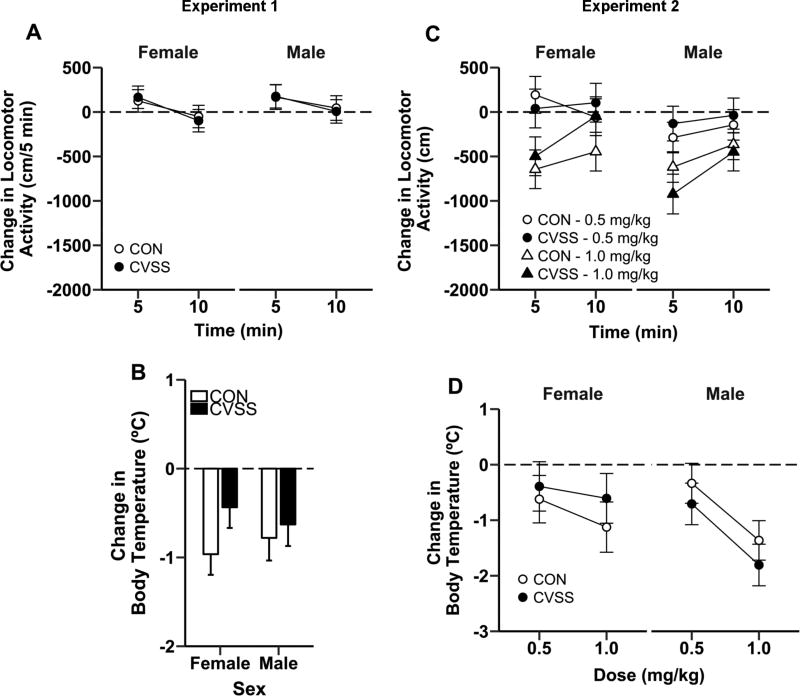Figure 3.
Adolescent CVSS did not influence acute nicotine effects on locomotor activity or body temperature during late adolescence or adulthood. There was no difference in the nicotine-induced (0.5 mg/kg, i.p.) change in (A) locomotor activity or (B) body temperature between CVSS and CON mice during late adolescence in Experiment 1. Similarly, there was no effect of adolescent CVSS exposure the nicotine-induced (0.5 or 1.0 mg/kg, i.p.) change in (C) locomotor activity or (D) body temperature during adulthood in Experiment 2. Data are presented as mean ± SEM of the nicotine response minus the saline response. Positive values indicate nicotine-induced locomotor stimulation and negative values indicate nicotine-induced locomotor depression and/or hypothermia (Experiment 1: n = 10–21/group; Experiment 2: n = 5–10/group).

